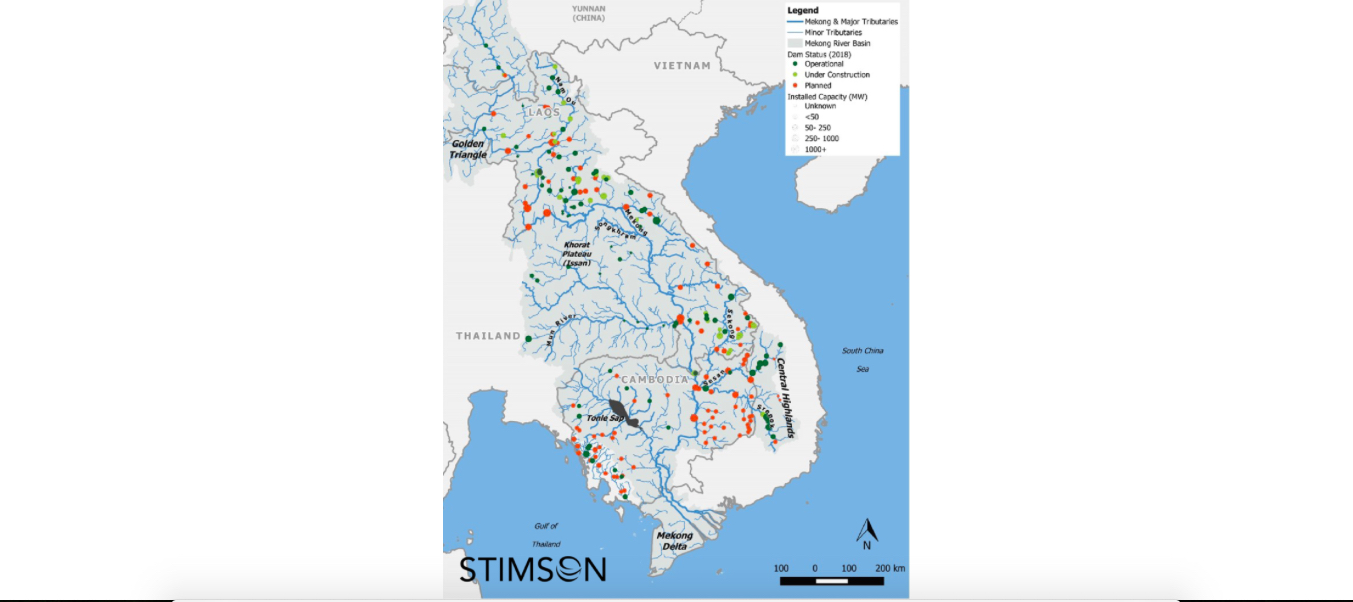Mekong River: Chinese Dam Releases Threaten Downstream Ecosystems, Livelihoods
Sudden Rise In Water Levels In Late March, Early April
23 Apr 2021 by The Water Diplomat
VIENTIANE, Laos

Parts of the Mekong River in Laos have risen suddenly during the dry season by as much as 12 cm in one day, threatening fish stocks, wildlife and aquatic plants vital to livelihoods.
Despite an apparent lack of formal notification, the authorities in Laos suspect the cause is a release of water from the controversial cascades of dams in China. Data from the Stimson Center’s Mekong Dam Monitor indicate that five Chinese dams released water between 29 March and 4 April.
Speaking to local media, Nowat Roykaew, president of the Chiang Khong Conservation Group in Thailand, noted that the rising water is clear – an indication that it is coming from Chinese dams, “because if it came from rain, it would be turbid,” he said, adding “The water fluctuation has broken down the whole ecosystem.”
People dependent upon the river for their livelihoods are alarmed by the sudden change, raising concerns about fish stocks as the higher flows wash away recently laid eggs, while birds along the riverside face the same risk if nesting areas are flooded. The clearer waters also provide fewer nutrients to support the ecosystem.
The latest rise is part of a long-running pattern of unnatural fluctuations. In January, river levels had reached “worrying” lows due to restricted output from the Jinghong dam due to the maintenance of power transmission lines.
It comes as the Mekong River Commission (MRC) released a new ten-year basin development strategy (BDS) and a five-year strategic plan to enable Mekong countries to address emerging challenges and improve the overall state of the basin.
A statement issued by the MRC said: “The new BDS is based on recent assessments of the significant impacts caused by water and related resources developments and infrastructure, including dams, that have changed flow regimes, affecting sediment transport and magnifying bank erosion. These impacts have in turn led to a decline in natural fish populations, the degradation of environmental assets and floodplains, and the reduction in replenishment of the Mekong Delta. Climate change has further added to the severity of the impacts, bringing more uncertainties and risks, including frequent droughts and floods.”
Last year, China agreed to share year-round water level and rainfall data with the MRC and pledged to notify the MRC and its Member Countries of any abnormal rise or fall in water levels or discharge, and provide relevant information on factors that might lead to sudden flooding.
The 12th longest in the world, the Mekong River runs through China, Myanmar, Laos, Thailand, Cambodia and Vietnam. Heavily dammed in China, changes to its flow have had a noticeable impact on the river’s ecology and on the downstream communities dependent upon it for food, fresh water and livelihoods.
Related Topics
4 Mar 2021 VIENTIANE, Laos
Mekong River water levels between Jinghong hydropower station in China’s Yunnan province and the Mekong Delta in Vietnam fell in recent weeksto worrying levels, says the Mekong Riv...
